#Louise Hume
Explore tagged Tumblr posts
Text
ENCONTRE UM AUTOR:
Envie sugestões. Leia uma citação no modo aleatório.
Autores Desconhecidos
Adélia Prado
Adrian Tchaikovsky
Affonso Romano de Sant’anna
Alain de Botton
Albert Einstein
Aldous Huxley
Alexander Pushkin
Amanda Gorman
Anaïs Nin
Andy Warhol
Andy Wootea
Anna Quindlen
Anne Frank
Antoine de Saint-Exupéry
Aristóteles
Arnaldo Jabor
Arthur Schopenhauer
Augusto Cury
Ben Howard
Benjamin Alire Sáenz
Benjamin Rush
Bill Keane
Bob Dylan
Brigitte Nicole
C. JoyBell C.
C.S. Lewis
Carl Jung
Carlos Drummond de Andrade
Carlos Fuentes
Carol Ann Duffy
Carol Rifka Brunt
Carolina Maria de Jesus
Caroline Kennedy
Cassandra Clare
Cecelia Ahern
Cecília Meireles
Cesare Pavese
Charles Baudelaire
Charles Chaplin
Charlotte Nsingi
Cheryl Strayed
Clarice Lispector
Claude Debussy
Coco Chanel
Connor Franta
Coolleen Hoover
Cora Coralina
Czesław Miłosz
Dale Carnegie
David Hume
Deborah Levy
Djuna Barnes
Dmitri Shostakovich
Douglas Coupland
Dream Hampton
E. E. Cummings
E. Grin
E. Lockhart
EA Bucchianeri
Edith Wharton
Ekta Somera
Elbert Hubbard
Elizabeth Acevedo
Elizabeth Strout
Emile Coue
Emily Brontë
Ernest Hemingway
Esther Hicks
Faraaz Kazi
Farah Gabdon
Fernando Pessoa
Fiódor Dostoiévski
Florbela Espanca
Franz Kafka
Frédéric Chopin
Fredrik Backman
Friedrich Nietzsche
Galileu Galilei
Georg Wilhelm Friedrich Hegel
George Orwell
Hafiz
Hanif Abdurraqib
Helen Oyeyemi
Henry Miller
Henry Rollins
Hilda Hilst
Iain Thomas
Immanuel Kant
Jacki Joyner-Kersee
James Baldwin
James Patterson
Jane Austen
Jean Jacques Rousseau
Jean Rhys
Jean-Paul Sartre
Jeremy Hammond
JK Rowling
João Guimarães Rosa
Joe Brock
Johannes Brahms
John Banville
John C. Maxwell
John Green
John Wooden
Jojo Moyes
Jorge Amado
José Leite Lopes
Joy Harjo
Juan Ramón Jiménez
Juansen Dizon
Katrina Mayer
Kurt Cobain
L.J. Smith
L.M. Montgomery
Leo Tolstoy
Lisa Kleypas
Lord Byron
Lord Huron
Louise Glück
Lucille Clifton
Ludwig van Beethoven
Lya Luft
Machado de Assis
Maggi Myers
Mahmoud Darwish
Manila Luzon
Manuel Bandeira
Marcel Proust
Margaret Mead
Marina Abramović
Mario Quintana
Mark Yakich
Marla de Queiroz
Martha Medeiros
Martin Luther King
Mary Oliver
Mattia
Maya Angelou
Mehdi Akhavan-Sales
Melissa Cox
Michaela Chung
Miguel de Cervantes Saavedra
Mitch Albom
N.K. Jemisin
Neal Shusterman
Neil Gaiman
Nicholas Sparks
Nietzsche
Nikita Gill
Nora Roberts
Ocean Vuong
Osho
Pablo Neruda
Patrick Rothfuss
Patti Smith
Paulo Coelho
Paulo Leminski
Perina
Peter Ilyich Tchaikovsky
Phil Good
Pierre Ronsard
Platão
Poe
R.M. Drake
Raamai
Rabindranath Tagore
Rachel de Queiroz
Ralph Emerson
Raymond Chandler
René Descartes
Reyna Biddy
Richard Kadrey
Richard Wagner
Ritu Ghatourey
Roald Dahl
Robert Schumann
Roy T. Bennett
Rumi
Ruth Rendell
Sage Francis
Séneca
Sérgio Vaz
Shirley Jackson
Sigmund Freud
Simone de Beauvoir
Spike Jonze
Stars Go Dim
Steve Jobs
Stephen Chbosky
Stevie Nicks
Sumaiya
Susan Gale
Sydney J. Harris
Sylvester McNutt
Sylvia Plath
Sysanna Kaysen
Ted Chiang
Thomas Keneally
Thomas Mann
Truman Capote
Tyler Knott Gregson
Veronica Roth
Victor Hugo
Vincent van Gogh
Virgílio Ferreira
Virginia Woolf
Vladimir Nabokov
Voltaire
Wale Ayinla
Warsan Shire
William C. Hannan
William Shakespeare
Wolfgang Amadeus Mozart
Yasmin Mogahed
Yoke Lore
Yoko Ogawa
319 notes
·
View notes
Text
Okay, folks, the mini-tourney is inching closer to the finals, so I'm going to give a list of the competitors in the Miss Billboard Tourney in order to give everyone a chance to submit more propaganda. The nominees are:
Lale Andersen
Marian Anderson
Signe Toly Anderson
Julie Andrews
LaVerne Andrews
Maxene Andrews
Patty Andrews
Ann-Margret
Joan Armatrading
Dorothy Ashby
Joan Baez
Pearl Bailey
Belle Baker
Josephine Baker
LaVern Baker
Florence Ballard
Brigitte Bardot
Eileen Barton
Fontella Bass
Shirley Bassey
Maggie Bell
Lola Beltran
Ivy Benson
Gladys Bentley
Jane Birkin
Cilla Black
Ronee Blakley
Teresa Brewer
Anne Briggs
Ruth Brown
Joyce Bryant
Vashti Bunyan
Kate Bush
Montserrat Caballe
Maria Callas
Blanche Calloway
Wendy Carlos
Cathy Carr
Raffaella Carra
Diahann Carroll
Karen Carpenter
June Carter Cash
Charo
Cher
Meg Christian
Gigliola Cinquetti
Petula Clark
Merry Clayton
Patsy Cline
Rosemary Clooney
Natalie Cole
Judy Collins
Alice Coltrane
Betty Comden
Barbara Cook
Rita Coolidge
Gal Costa
Ida Cox
Karen Dalton
Marie-Louise Damien
Betty Davis
Jinx Dawson
Doris Day
Blossom Dearie
Kiki Dee
Lucienne Delyle
Sandy Denny
Jackie DeShannon
Gwen Dickey
Marlene Dietrich
Marie-France Dufour
Julie Driscoll
Yvonne Elliman
Cass Elliot
Maureen Evans
Agnetha Faeltskog
Marianne Faithfull
Mimi Farina
Max Feldman
Gracie Fields
Ella Fitzgerald
Roberta Flack
Lita Ford
Connie Francis
Aretha Franklin
France Gall
Judy Garland
Crystal Gayle
Gloria Gaynor
Bobbie Gentry
Astrud Gilberto
Donna Jean Godchaux
Lesley Gore
Eydie Gorme
Margo Guryan
Sheila Guyse
Nina Hagen
Francoise Hardy
Emmylou Harris
Debbie Harry
Annie Haslam
Billie Holiday
Mary Hopkin
Lena Horne
Helen Humes
Betty Hutton
Janis Ian
Mahalia Jackson
Wanda Jackson
Etta James
Joan Jett
Bessie Jones
Etta Jones
Gloria Jones
Grace Jones
Shirley Jones
Tamiko Jones
Janis Joplin
Barbara Keith
Carole King
Eartha Kitt
Chaka Khan
Hildegard Knef
Gladys Knight
Sonja Kristina
Patti Labelle
Cleo Laine
Nicolette Larson
Daliah Lavi
Vicky Leandros
Peggy Lee
Rita Lee
Alis Lesley
Barbara Lewis
Abbey Lincoln
Melba Liston
Julie London
Darlene Love
Lulu
Anni-Frid Lyngstad
Barbara Lynn
Loretta Lynn
Vera Lynn
Siw Malmkvist
Lata Mangeshkar
Linda McCartney
Kate McGarrigle
Christie McVie
Bette Midler
Jean Millington
June Millington
Liza Minnelli
Carmen Miranda
Joni Mitchell
Liz Mitchell
Marion Montgomery
Lee Morse
Nana Mouskouri
Anne Murray
Wenche Myhre
Holly Near
Olivia Newton-John
Stevie Nicks
Nico
Laura Nyro
Virginia O’Brien
Odetta
Yoko Ono
Shirley Owens
Patti Page
Dolly Parton
Freda Payne
Michelle Phillips
Edith Piaf
Ruth Pointer
Leontyne Price
Suzi Quatro
Gertrude Rainey
Bonnie Raitt
Carline Ray
Helen Reddy
Della Reese
Martha Reeves
June Richmond
Jeannie C. Riley
Minnie Riperton
Jean Ritchie
Chita Rivera
Clara Rockmore
Linda Ronstadt
Marianne Rosenberg
Diana Ross
Anna Russell
Melanie Safka
Buffy Sainte-Marie
Samantha Sang
Pattie Santos
Hazel Scott
Doreen Shaffer
Jackie Shane
Marlena Shaw
Sandie Shaw
Dinah Shore
Judee Sill
Carly Simon
Nina Simone
Nancy Sinatra
Siouxsie Sioux
Grace Slick
Bessie Smith
Mamie Smith
Patti Smith
Ethel Smyth
Mercedes Sosa
Ronnie Spector
Dusty Springfield
Mavis Staples
Candi Staton
Barbra Streisand
Poly Styrene
Maxine Sullivan
Donna Summer
Pat Suzuki
Norma Tanega
Tammi Terrell
Sister Rosetta Tharpe
Big Mama Thornton
Mary Travers
Moe Tucker
Tina Turner
Twiggy
Bonnie Tyler
Sylvia Tyson
Sarah Vaughan
Sylvie Vartan
Mariska Veres
Akiko Wada
Claire Waldoff
Jennifer Warnes
Dee Dee Warwick
Dionne Warwick
Dinah Washington
Ethel Waters
Elisabeth Welch
Kitty Wells
Mary Wells
Juliane Werding
Tina Weymouth
Cris Williamson
Ann Wilson
Mary Wilson
Nancy Wilson
Anna Mae Winburn
Syreeta Wright
Tammy Wynette
Nan Wynn
Those in italics have five or more pieces of usable visual, written, or audio propaganda already. If you have any visuals like photos or videos, or if you have something to say in words, submit it to this blog before round one begins on June 25th!
If you don't see a name you submitted here, it's because most or all of their career was as a child/they were too young for the cutoff, their career was almost entirely after 1979, or music was something they only dabbled in and are hardly known for. There are quite a few ladies on the list whose primary career wasn't "recording artist" or "live musician," but released several albums or were in musical theater, so they've been accepted.
#long post#miss billboard tourney#i wasn't originally going to list them all but i decided to do so because there are so many without propaganda
48 notes
·
View notes
Text
Commons Vote
On: Renters' Rights Bill: Third Reading
Ayes: 440 (79.0% Lab, 14.1% LD, 2.7% Ind, 1.1% DUP, 0.9% PC, 0.9% Green, 0.5% SDLP, 0.2% APNI, 0.2% UUP, 0.2% TUV) Noes: 111 (97.3% Con, 2.7% RUK) Absent: ~99
Day's business papers: 2025-01-14
Likely Referenced Bill: Renters' Rights Bill
Description: A Bill to make provision changing the law about rented homes, including provision abolishing fixed term assured tenancies and assured shorthold tenancies; imposing obligations on landlords and others in relation to rented homes and temporary and supported accommodation; and for connected purposes.
Originating house: Commons Current house: Commons Bill Stage: 3rd reading
Individual Votes:
Ayes
Labour (347 votes)
Abena Oppong-Asare Adam Jogee Adam Thompson Afzal Khan Al Carns Alan Campbell Alan Gemmell Alan Strickland Alex Baker Alex Barros-Curtis Alex Mayer Alex McIntyre Alex Sobel Alice Macdonald Alison Hume Alison McGovern Alison Taylor Alistair Strathern Allison Gardner Amanda Hack Amanda Martin Andrew Cooper Andrew Gwynne Andrew Lewin Andrew Pakes Andrew Ranger Andrew Western Andy MacNae Andy McDonald Andy Slaughter Angela Eagle Angela Rayner Anna Dixon Anna Gelderd Anna McMorrin Anneliese Dodds Anneliese Midgley Antonia Bance Ashley Dalton Baggy Shanker Bambos Charalambous Barry Gardiner Bayo Alaba Beccy Cooper Becky Gittins Bell Ribeiro-Addy Ben Coleman Ben Goldsborough Bill Esterson Brian Leishman Callum Anderson Calvin Bailey Carolyn Harris Cat Eccles Cat Smith Catherine Atkinson Catherine Fookes Catherine McKinnell Charlotte Nichols Chi Onwurah Chris Bloore Chris Bryant Chris Curtis Chris Elmore Chris Evans Chris Hinchliff Chris Kane Chris McDonald Chris Murray Chris Vince Chris Ward Chris Webb Christian Wakeford Claire Hazelgrove Claire Hughes Clive Efford Clive Lewis Connor Naismith Damien Egan Dan Aldridge Dan Jarvis Dan Tomlinson Daniel Francis Daniel Zeichner Danny Beales Darren Jones Darren Paffey Dave Robertson David Baines David Burton-Sampson David Pinto-Duschinsky David Smith David Taylor David Williams Dawn Butler Debbie Abrahams Deirdre Costigan Derek Twigg Diana Johnson Diane Abbott Douglas Alexander Douglas McAllister Elaine Stewart Elsie Blundell Emily Darlington Emma Foody Emma Hardy Emma Lewell-Buck Emma Reynolds Euan Stainbank Fabian Hamilton Feryal Clark Fleur Anderson Florence Eshalomi Frank McNally Fred Thomas Gareth Snell Gen Kitchen Georgia Gould Gerald Jones Gill Furniss Gill German Gordon McKee Graeme Downie Graham Stringer Grahame Morris Gregor Poynton Gurinder Singh Josan Hamish Falconer Harpreet Uppal Heidi Alexander Helen Hayes Helena Dollimore Henry Tufnell Hilary Benn Ian Lavery Imogen Walker Irene Campbell Jack Abbott Jacob Collier Jade Botterill Jake Richards James Asser James Frith James Murray James Naish Jas Athwal Jayne Kirkham Jeevun Sandher Jeff Smith Jenny Riddell-Carpenter Jess Asato Jessica Morden Jessica Toale Jim Dickson Jim McMahon Jo Platt Jo Stevens Jo White Joani Reid Joe Morris Joe Powell Johanna Baxter John Grady John Slinger John Whitby Jon Pearce Jon Trickett Jonathan Brash Jonathan Davies Jonathan Hinder Josh Dean Josh MacAlister Josh Newbury Josh Simons Julia Buckley Julie Minns Juliet Campbell Justin Madders Kanishka Narayan Karin Smyth Karl Turner Kate Dearden Kate Osamor Kate Osborne Katie White Katrina Murray Kerry McCarthy Kevin Bonavia Kevin McKenna Kim Leadbeater Kirith Entwistle Kirsteen Sullivan Kirsty McNeill Laura Kyrke-Smith Lauren Sullivan Laurence Turner Lee Barron Lee Pitcher Leigh Ingham Lewis Atkinson Liam Byrne Liam Conlon Lilian Greenwood Lillian Jones Linsey Farnsworth Liz Kendall Liz Twist Lizzi Collinge Lloyd Hatton Lola McEvoy Lorraine Beavers Louise Haigh Louise Jones Lucy Powell Lucy Rigby Luke Akehurst Luke Charters Luke Murphy Margaret Mullane Maria Eagle Marie Rimmer Marie Tidball Mark Ferguson Mark Sewards Mark Tami Markus Campbell-Savours Marsha De Cordova Martin McCluskey Martin Rhodes Mary Glindon Matt Bishop Matt Rodda Matt Turmaine Matthew Patrick Matthew Pennycook Maureen Burke Maya Ellis Meg Hillier Melanie Onn Melanie Ward Miatta Fahnbulleh Michael Payne Michael Shanks Michael Wheeler Michelle Scrogham Michelle Welsh Mike Kane Mike Reader Mike Tapp Mohammad Yasin Natalie Fleet Natasha Irons Naushabah Khan Navendu Mishra Neil Coyle Neil Duncan-Jordan Nesil Caliskan Nia Griffith Nicholas Dakin Nick Smith Nick Thomas-Symonds Noah Law Oliver Ryan Olivia Bailey Olivia Blake Pam Cox Patricia Ferguson Patrick Hurley Paul Davies Paul Foster Paul Waugh Paula Barker Paulette Hamilton Perran Moon Peter Dowd Peter Kyle Peter Lamb Peter Prinsley Peter Swallow Polly Billington Preet Kaur Gill Rachael Maskell Rachel Blake Rachel Hopkins Rachel Taylor Rosena Allin-Khan Rupa Huq Rushanara Ali Ruth Cadbury Ruth Jones Sadik Al-Hassan Sally Jameson
Sam Carling Sam Rushworth Samantha Dixon Samantha Niblett Sarah Champion Sarah Coombes Sarah Hall Sarah Owen Sarah Russell Sarah Sackman Sarah Smith Satvir Kaur Scott Arthur Sean Woodcock Shabana Mahmood Sharon Hodgson Simon Lightwood Simon Opher Sojan Joseph Sonia Kumar Stella Creasy Stephanie Peacock Stephen Kinnock Stephen Morgan Stephen Timms Steve Race Steve Reed Steve Witherden Steve Yemm Sureena Brackenridge Tahir Ali Taiwo Owatemi Tanmanjeet Singh Dhesi Tim Roca Toby Perkins Tom Collins Tom Hayes Tom Rutland Tonia Antoniazzi Tony Vaughan Torcuil Crichton Torsten Bell Tracy Gilbert Tristan Osborne Tulip Siddiq Uma Kumaran Valerie Vaz Vicky Foxcroft Warinder Juss Wes Streeting Will Stone Yasmin Qureshi Yuan Yang Zubir Ahmed
Liberal Democrat (62 votes)
Adam Dance Al Pinkerton Alex Brewer Alison Bennett Alistair Carmichael Andrew George Angus MacDonald Anna Sabine Ben Maguire Brian Mathew Calum Miller Cameron Thomas Charlie Maynard Claire Young Clive Jones Daisy Cooper Danny Chambers David Chadwick Ed Davey Freddie van Mierlo Gideon Amos Helen Maguire Helen Morgan Ian Roome Ian Sollom James MacCleary Jamie Stone Jess Brown-Fuller John Milne Josh Babarinde Joshua Reynolds Layla Moran Lee Dillon Lisa Smart Liz Jarvis Luke Taylor Manuela Perteghella Marie Goldman Martin Wrigley Max Wilkinson Mike Martin Monica Harding Munira Wilson Olly Glover Paul Kohler Pippa Heylings Rachel Gilmour Roz Savage Sarah Dyke Sarah Green Sarah Olney Steff Aquarone Susan Murray Tim Farron Tom Gordon Tom Morrison Victoria Collins Vikki Slade Wendy Chamberlain Wera Hobhouse Will Forster Zöe Franklin
Independent (12 votes)
Adnan Hussain Apsana Begum Ayoub Khan Ian Byrne Iqbal Mohamed Jeremy Corbyn John McDonnell Mike Amesbury Rebecca Long Bailey Richard Burgon Shockat Adam Zarah Sultana
Democratic Unionist Party (5 votes)
Carla Lockhart Gavin Robinson Gregory Campbell Jim Shannon Sammy Wilson
Plaid Cymru (4 votes)
Ann Davies Ben Lake Liz Saville Roberts Llinos Medi
Green Party (4 votes)
Adrian Ramsay Carla Denyer Ellie Chowns Siân Berry
Social Democratic & Labour Party (2 votes)
Claire Hanna Colum Eastwood
Alliance (1 vote)
Sorcha Eastwood
Ulster Unionist Party (1 vote)
Robin Swann
Traditional Unionist Voice (1 vote)
Jim Allister
Noes
Conservative (107 votes)
Alan Mak Alberto Costa Alec Shelbrooke Alex Burghart Alicia Kearns Alison Griffiths Andrew Bowie Andrew Griffith Andrew Murrison Andrew Rosindell Andrew Snowden Ashley Fox Ben Obese-Jecty Ben Spencer Bernard Jenkin Blake Stephenson Bob Blackman Bradley Thomas Caroline Dinenage Caroline Johnson Charlie Dewhirst Chris Philp Claire Coutinho Damian Hinds Danny Kruger David Davis David Mundell David Reed David Simmonds Desmond Swayne Edward Argar Edward Leigh Esther McVey Gagan Mohindra Gareth Bacon Gareth Davies Gavin Williamson Geoffrey Clifton-Brown Geoffrey Cox George Freeman Graham Stuart Greg Smith Gregory Stafford Harriet Cross Harriett Baldwin Helen Grant Helen Whately Iain Duncan Smith Jack Rankin James Cartlidge James Cleverly James Wild Jeremy Hunt Jeremy Wright Jerome Mayhew Jesse Norman Joe Robertson John Cooper John Glen John Hayes John Lamont Joy Morrissey Julia Lopez Julian Lewis Julian Smith Karen Bradley Katie Lam Kemi Badenoch Kevin Hollinrake Kieran Mullan Kit Malthouse Laura Trott Lewis Cocking Lincoln Jopp Louie French Luke Evans Mark Francois Mark Garnier Martin Vickers Matt Vickers Mel Stride Mike Wood Mims Davies Neil Hudson Neil O'Brien Neil Shastri-Hurst Nick Timothy Nigel Huddleston Oliver Dowden Patrick Spencer Paul Holmes Peter Bedford Peter Fortune Rebecca Paul Robbie Moore Robert Jenrick Roger Gale Saqib Bhatti Sarah Bool Shivani Raja Simon Hoare Steve Barclay Stuart Anderson Stuart Andrew Suella Braverman Victoria Atkins Wendy Morton
Reform UK (3 votes)
James McMurdock Richard Tice Rupert Lowe
2 notes
·
View notes
Text
Greetings and welcome to my blog!
since I now have a following of eleven something wonderful individuals, I considered it fit to introduce myself through, as is custom here, an 🌈intro post🌈
I'm Isha, He/him, I'm transmasc, Audihd, pansexual, demirose, dyslexic, a bibliophile, a cinema enthusiast, a severe hyperfixator, and an Angry South Asian Socialist Liberal among other things! I'm a cat person, a night owl, a bit weird and always ready to make new freinds!
my main blog is @spiteful-summer-of-sixteen, see also: my side-blog @a-singing-lunatic
You can expect to see me posting about my favorite authors and books, including but not limited to john Milton, Oscar Wilde, Dostoevsky, Anais Nin, Shakespeare, Margaret Attwood, Agatha Christie, Louisa May Alcott, Louise Gluck, Simone de Beauvoir, Albert Camus, Antonio Gramsci, Dianna Wynne Jones, Thomas Hardy, Hume, A.A Milne, Franz Kafka, Antoine De Saint-Exupéry, Sylvia Plath, Michelle Foucault and others!
fandoms you can most likely see me posting for are Good Omens, Dead Boy Detectives, Any and All Things Pertaining To David Tennant and Michael Sheen, Doctor Who, Florence Pugh and Her Entire Filmography, Timothee Chalamet (I am basic, it is no secret), Rivals, Arcane, Ducktales, Bottoms, Queer Cinema As A Whole, Derry Girls, Heartstopper, Luca Guadagnino, Wes Anderson, Greta Gerwig, The Song Of Achilles, Carol, Marilyn Monroe, Classic Hollywood Movies That Are Queer-Coded, Killing Eve, Dead Poets Society, Studio Ghibli movies, and many, many more!
my favorite musicians include Hozier, Mitski, Queen, Taylor Swift, Edith Piaf, Phoebe Bridgers, Noah Kahan, Maneskin, Ella Fitzgerald, Louis Armstrong, Elvis Presley, Classical Indian music, etc.
my hobbies are_ doomscrolling, studying (on occasion), pretending to be mentally stable, eating, reading, watching movies, binge-watching tv shows, drawing/painting, writing (poetry and prose, you name it, we don't do it!), being on the lookout for new fandoms to join, professional procrastinating, and being @nastasya--filippovna 's weird younger brother
Vent posts and personal thing will be published under the tag #Isha vs the Horrors (because I'm dramatic, what's not clicking?)
all GO related content will be under the tag #Good Omens, DBDA under #DBDA, and so on....
random thoughts will be found at #boyyaping or #Isha's Online Diary (I'm self-conceited and it shows....)
all philosophy, writing, thoughts and deep shit will be found at #Isha's thought dumpster
memes and generally humorous content will be on #funny
(polite reminder that I will not be using exclusively these tags, but that they will generally help you to scroll my blog for the content you want!)

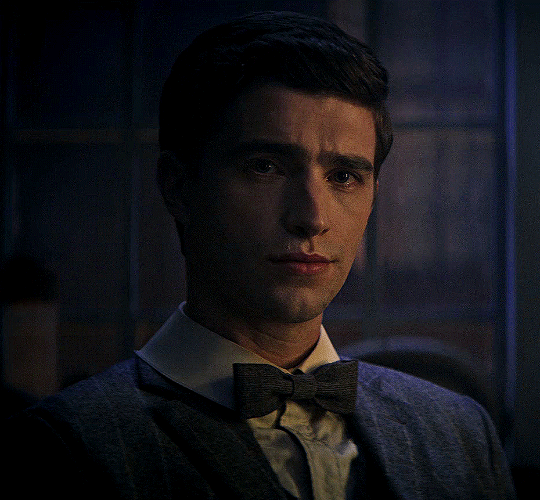





See ya, dickos!
+bonus;

Terfs, homophobes, transphobes, hateful betches, sexists, preachy bastards DNI
1 note
·
View note
Text
9 shows, 9 characters - I was tagged by @adamshallperish
1. Sister Michael - Derry Girls
2. Helly R - Severance
3. Greg - Over The Garden Wall
4. Desmond Hume - Lost
5. Steve Harrington - Stranger Things
6. Olive Snook - Pushing Daisies
7. Dr. Doofenshmitz - Phineas and Ferb
8. Louise Belcher - Bob's Burgers
9. Abed Nadir - Community
I hate tagging people so if you want to do it go for it
#i tried to make a list of my favorite characters ahead of time and then narrowed it down to nine#I'm sure I still forgot someone though#also picking a lost character was hard - Juliet and mr. eko were both in the running#also this list isn't in any particular order
1 note
·
View note
Text

completely absorted in her studies , gaze locked at the human anatomy book , louise still felt relaxed at adam ' s presence . even though the pair hadn ' t labeled their relationship , the intimacy just felt . . . natural . although the nibbling on the edge of her pencil , it was his caress that really calmed the ginger . ' hm ? ' she humed in reply , closing her book and switching her focus completely to him as she noticed some sort of tension in his voice , bringing a concerned look to her face . ' jesus , adam ! you scared me ! for a solid second , i don ' t know , i tought you maybe wanted to end things ! ' she laughed off her own nervousness . ' yeah , of course i ' ll go ! you know i ' ve always wanted to see you play ! should i wear your jersey too ? ' with a shy twitch of insecurity in her smile , she cleared her throat ' i mean . . . i don ' t want you to think of me as a pitch bitch . . . you know that i like you for who you are , not your status or anything like that , right ? '
OPEN TO: f
PLOT: adam is a famous football (soccer) player, dating your muse and he wants to make things really serious, by inviting her to a game!

adam sits with the other, idly playing with her hair, he's happy, he feels settled. this was rare for adam, he normally was quite the player (not just in the football sense!), actually falling for someone was new to him. "i've been thinking about something" he mumbles, feeling nervous, "we've got a game this weekend, i want you to come".
19 notes
·
View notes
Text
LOST ANGEL | Official HD Trailer (2022) | DRAMA | Film Threat Trailers
LOST ANGEL | Official HD Trailer (2022) | DRAMA | Film Threat Trailers
When Lisa returns home to the small island of Newpoint after the mysterious death of her sister, she is drawn into a dangerous and unsettling quest to uncover the truth. Starring Sascha Harman, Fintan Shevlin, Maggie Clune, Matthew Carrington, Duncan Henderson. Directed by Drake Hume and Louise Hume. Lost Angel will be released on Digital on March 15, 2022. Subscribe to Film…
View On WordPress
#dangerous quest#death of her sister#Drake Hume#Duncan Henderson#film threat#film threat trailers#Fintan Shevlin#hd trailers#Louise Hume#Maggie Clune#Matthew Carrington#movie trailers 2021#movie trailers 2022#mysterious death#official hd trailer#official trailer#returns home#Sascha Harman#small island#trailers#uncover the truth#unsettling quest
0 notes
Photo
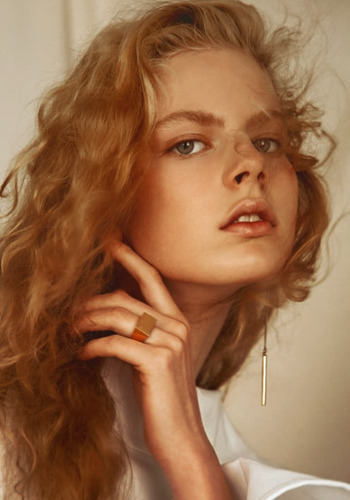
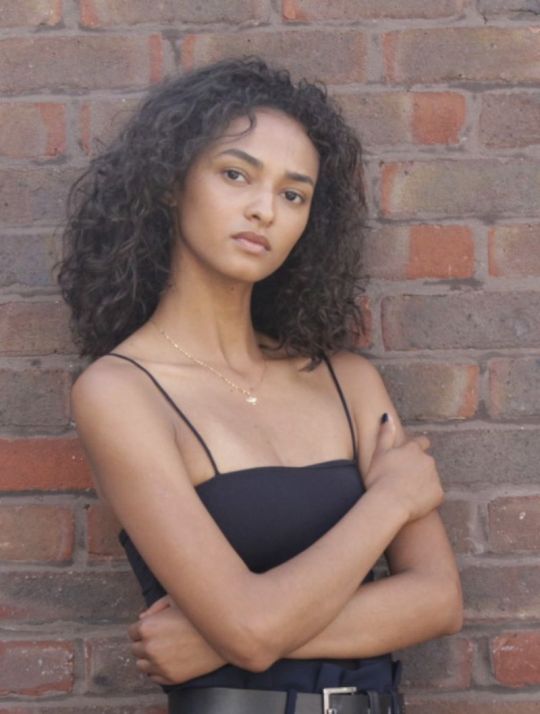


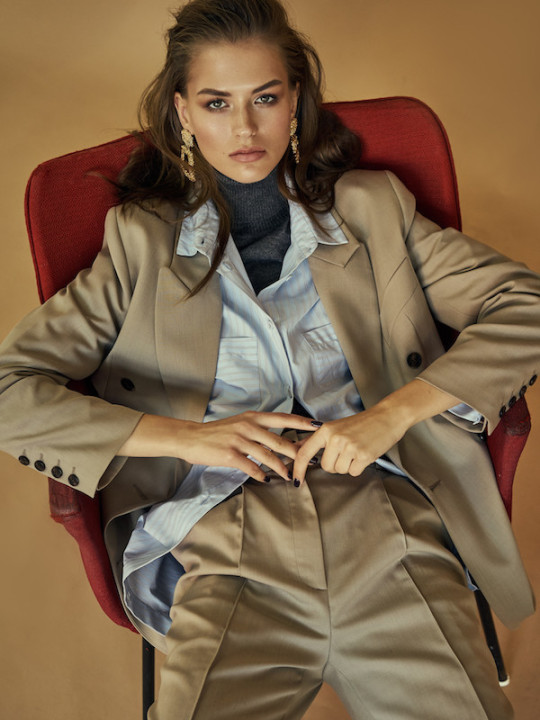
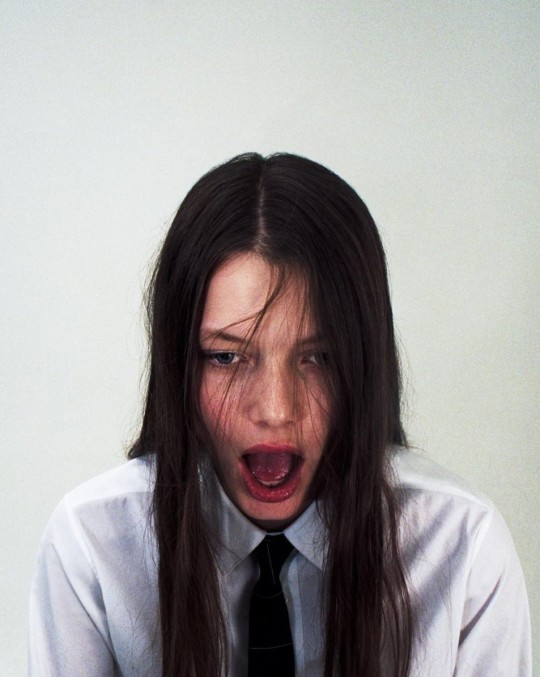
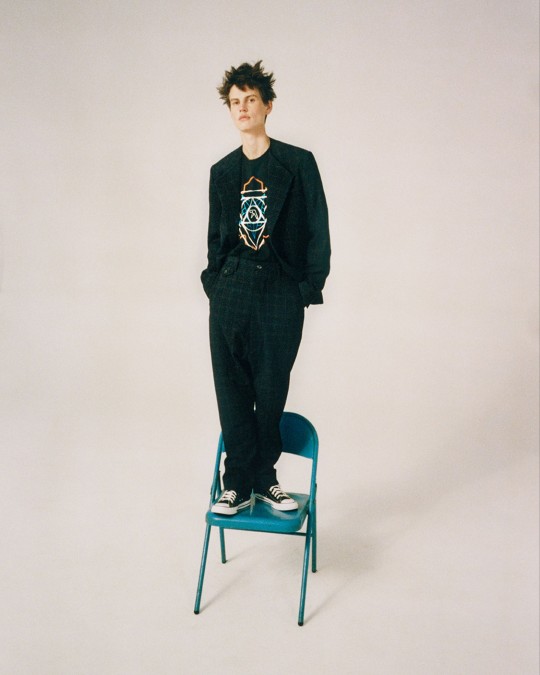

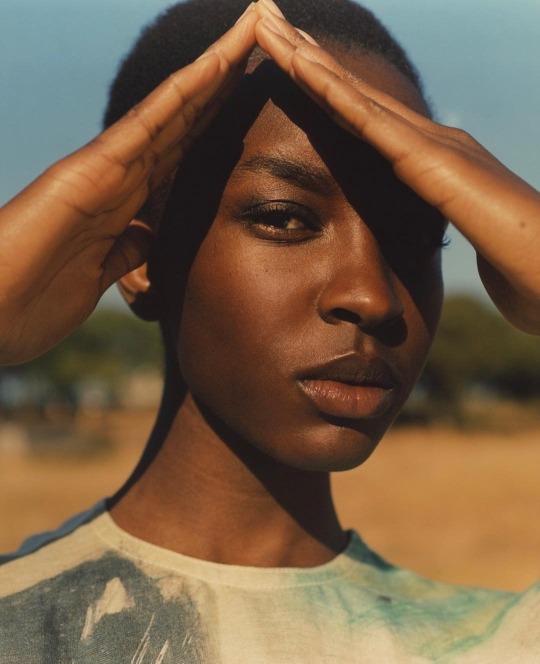

#Jolie Alien#Angelica Alves#Kirsty Hume#Katya Bybina#Alena Frolova#Louise Robert#Saskia de Brauw#Katia Andre#nicole atieno#georgia howorth#models#top models#fashion#faves
4 notes
·
View notes
Text

Hume Cronyn and Jessica Tandy, New York, 1949, by Louise Dahl-Wolfe
48 notes
·
View notes
Text

Top Row:
-Anna Karenina by Leo Tolstoy (trans. Louise and Aylmer Maude)
-The Last Quarter of the Moon by Chi Zijian (trans. Bruce Humes)
-My Annihilation by Fuminori Nakamura (trans. Sam Bett)
Bottom Row:
-Three Assassins by Kotaro Isaka (trans. Sam Malissa)
-Tales from the Cafe by Toshikazu Kawaguchi (trans. Geoffrey Trousselot)
-Amrita by Banana Yoshimoto (trans. Russell F. Wasden)
11 notes
·
View notes
Photo
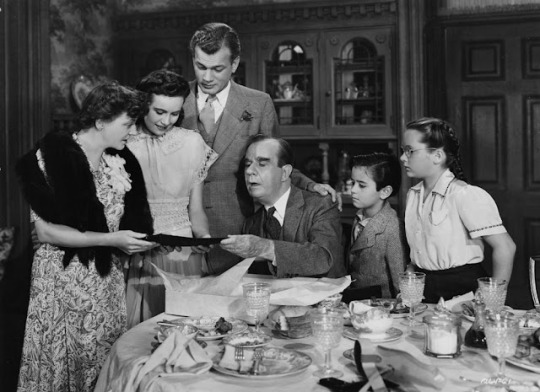
Patricia Collinge, Teresa Wright, Joseph Cotten, Henry Travers, Charles Bates, Edna May Wonacott in Shadow of a Doubt (Alfred Hitchcock, 1943) Cast: Teresa Wright, Joseph Cotten, Macdonald Carey, Henry Travers, Patricia Collinge, Hume Cronyn, Janet Shaw. Screenplay: Thornton Wilder, Sally Benson, Alma Reville, Gordon McDonell. Cinematography: Joseph A. Valentine. Art direction: John B. Goodman. Film editing: Milton Carruth. Music: Dimitri Tiomkin. Thornton Wilder's play Our Town looms large over Alfred Hitchcock's Shadow of a Doubt. Wilder wrote the first draft of the screenplay, based on a story idea by Gordon McDonell. The screenplay was revised and completed by Sally Benson (author of the New Yorker stories that were the basis for Vincente Minnelli's 1944 musical Meet Me in St. Louis) and Hitchcock's wife, Alma Reville, after Wilder left for service in World War II, but it's his benign vision of small town life that informs the Santa Rosa of Shadow of a Doubt. Hitchcock even paid tribute to Wilder with a separate on-screen credit in the film's opening. The premise of Shadow of a Doubt is essentially: What if a serial killer showed up in Grover's Corners? What better place to hide out from the cops than in the bosom of one's own "average American family," as the Newtons of Santa Rosa are said to be? Instead of Hitchcock's frequent "wrong man" plot device, what we have here is the wrong place, the tension being developed from Uncle Charlie's threat to small town tranquility. Hitchcock is often quoted as saying Shadow of a Doubt was one of his favorite films, and there's much to admire in it, especially the performances. As Uncle Charlie, Joseph Cotten, with his quick turns from joviality to menace, is splendid, and Teresa Wright as his namesake niece makes the most of their odd emotional connection: If Uncle Charlie is psychotic, Young Charlie is at least neurotic, especially in her often frantic and edgy attempts to launch her own investigation, either to prove or disprove her uncle's guilt. Patricia Collinge is also superb as the mother who has to be protected from the truth about her brother, lest the whole family structure that depends on her hard work and common sense collapse. Henry Travers as the father and Hume Cronyn as his mama's-boy friend provide the necessary macabre comedy in their schemes to bump each other off. But I think the film is undermined by the unnecessary introduction of a love story between Charlie and the detective Jack Graham. It's inserted into the film too abruptly, almost in a cut between scenes: All of a sudden Charlie has not only figured out that Graham is a detective but she has also fallen for him. A more interesting actor than Macdonald Carey might have made it plausible, but his affable Graham doesn't feel like an appropriate match for the intensity that is Charlie. To be fair to Wilder, Grover's Corners was no paradise, as the third act of Our Town demonstrates, and Uncle Charlie is perhaps not the only serpent in Santa Rosa: The scene in which the two Charlies go to a smoky dive and encounter the waitress Louise (Janet Shaw), a schoolmate of Young Charlie's who has fallen on hard times and looks longingly at the emerald ring her friend is wearing, is an effective counterpoint to the folksiness and bonhomie on the small town surface. I think the film could have benefited from a bit more of the dark underside of Santa Rosa and a bit less of its superficial geniality.
#Shadow of a Doubt#Alfred Hitchcock#Patricia Collinge#Teresa Wright#Joseph Cotten#Henry Travers#Charles Bates#Edna May Wonacott
4 notes
·
View notes
Text
Commons Vote
On: Passenger Railway Services Bill (Public Ownership) Bill: Second Reading
Ayes: 351 (96.6% Lab, 2.3% Ind, 0.8% Green, 0.3% SDLP) Noes: 84 (100.0% Con) Absent: ~215
Day's business papers: 2024-7-29
Likely Referenced Bill: Passenger Railway Services (Public Ownership) Bill
Description: A Bill to make provision for passenger railway services to be provided by public sector companies instead of by means of franchises.
Originating house: Commons Current house: Commons Bill Stage: Committee of the whole House
Individual Votes:
Ayes
Labour (341 votes)
Abena Oppong-Asare Abtisam Mohamed Adam Jogee Adam Thompson Afzal Khan Al Carns Alan Campbell Alan Gemmell Alan Strickland Alex Baker Alex Ballinger Alex Barros-Curtis Alex Davies-Jones Alex Mayer Alex McIntyre Alex Norris Alex Sobel Alice Macdonald Alison Hume Alison McGovern Alison Taylor Alistair Strathern Allison Gardner Amanda Hack Amanda Martin Andrew Cooper Andrew Gwynne Andrew Lewin Andrew Pakes Andrew Ranger Andrew Western Andy MacNae Andy McDonald Angela Eagle Anna Dixon Anna Gelderd Anneliese Dodds Anneliese Midgley Baggy Shanker Bambos Charalambous Barry Gardiner Bayo Alaba Beccy Cooper Becky Gittins Bell Ribeiro-Addy Ben Coleman Ben Goldsborough Bill Esterson Blair McDougall Brian Leishman Bridget Phillipson Callum Anderson Calvin Bailey Carolyn Harris Cat Eccles Cat Smith Catherine Atkinson Catherine McKinnell Catherine West Charlotte Nichols Chris Bloore Chris Curtis Chris Elmore Chris Hinchliff Chris Kane Chris McDonald Chris Murray Chris Vince Chris Webb Christian Wakeford Claire Hazelgrove Claire Hughes Clive Betts Clive Lewis Connor Naismith Damien Egan Dan Aldridge Dan Jarvis Dan Tomlinson Daniel Francis Danny Beales Darren Jones Darren Paffey Dave Robertson David Baines David Burton-Sampson David Pinto-Duschinsky David Taylor David Williams Dawn Butler Debbie Abrahams Deirdre Costigan Derek Twigg Diana Johnson Douglas Alexander Douglas McAllister Ed Miliband Elaine Stewart Emily Darlington Emma Foody Emma Hardy Emma Lewell-Buck Emma Reynolds Euan Stainbank Feryal Clark Florence Eshalomi Frank McNally Fred Thomas Gen Kitchen Georgia Gould Gerald Jones Gill German Gordon McKee Graeme Downie Graham Stringer Grahame Morris Gregor Poynton Gurinder Josan Hamish Falconer Harpreet Uppal Heidi Alexander Helen Hayes Helena Dollimore Henry Tufnell Hilary Benn Ian Lavery Ian Murray Imogen Walker Irene Campbell Jack Abbott Jacob Collier Jade Botterill Jake Richards James Asser James Murray James Naish Janet Daby Jas Athwal Jayne Kirkham Jeevun Sandher Jeff Smith Jenny Riddell-Carpenter Jess Asato Jessica Morden Jessica Toale Jim Dickson Jim McMahon Jo Platt Jo Stevens Jo White Joani Reid Jodie Gosling Joe Morris Joe Powell Johanna Baxter John Grady John Healey John Slinger John Whitby Jon Pearce Jon Trickett Jonathan Brash Jonathan Davies Jonathan Hinder Josh Dean Josh Fenton-Glynn Josh MacAlister Josh Newbury Josh Simons Julia Buckley Juliet Campbell Justin Madders Kanishka Narayan Kate Dearden Kate Osamor Kate Osborne Katie White Keir Mather Kenneth Stevenson Kerry McCarthy Kevin Bonavia Kevin McKenna Kim Johnson Kim Leadbeater Kirith Entwistle Kirsteen Sullivan Kirsty McNeill Laura Kyrke-Smith Lauren Edwards Lauren Sullivan Laurence Turner Lee Barron Lee Pitcher Leigh Ingham Lewis Atkinson Liam Byrne Liam Conlon Lilian Greenwood Lillian Jones Linsey Farnsworth Lisa Nandy Liz Kendall Liz Twist Lizzi Collinge Lloyd Hatton Lorraine Beavers Louise Haigh Louise Jones Lucy Powell Lucy Rigby Luke Akehurst Luke Charters Luke Murphy Luke Myer Luke Pollard Margaret Mullane Maria Eagle Mark Ferguson Mark Hendrick Mark Sewards Mark Tami Markus Campbell-Savours Marsha De Cordova Martin Rhodes Mary Creagh Mary Glindon Matt Bishop Matt Rodda Matt Turmaine Matt Western Matthew Patrick Matthew Pennycook Maureen Burke Maya Ellis Meg Hillier Melanie Onn Melanie Ward Miatta Fahnbulleh Michael Payne Michael Shanks Michael Wheeler Michelle Scrogham Michelle Welsh Mike Amesbury Mike Kane Mike Reader Mike Tapp Mohammad Yasin Nadia Whittome Natalie Fleet Natasha Irons Naushabah Khan Neil Coyle Neil Duncan-Jordan Nia Griffith Nicholas Dakin Noah Law Oliver Ryan Olivia Bailey Olivia Blake Pam Cox Pamela Nash Pat McFadden Patricia Ferguson Paul Davies Paul Foster Paul Waugh Paula Barker Paulette Hamilton Perran Moon Peter Kyle Peter Lamb Peter Prinsley Peter Swallow Phil Brickell Polly Billington Preet Kaur Gill Rachael Maskell Rachel Blake Rachel Hopkins Richard Baker Richard Quigley Rosena Allin-Khan Rosie Wrighting Rupa Huq Ruth Cadbury Ruth Jones Sadik Al-Hassan Sally Jameson Sam Carling Sam Rushworth Samantha Dixon Samantha Niblett
Sarah Coombes Sarah Edwards Sarah Hall Sarah Jones Sarah Owen Sarah Russell Sarah Sackman Scott Arthur Sean Woodcock Seema Malhotra Shabana Mahmood Sharon Hodgson Shaun Davies Simon Lightwood Simon Opher Siobhain McDonagh Sojan Joseph Sonia Kumar Stella Creasy Stephen Doughty Stephen Timms Steve Race Steve Reed Steve Witherden Steve Yemm Sureena Brackenridge Tahir Ali Taiwo Owatemi Tanmanjeet Singh Dhesi Tim Roca Toby Perkins Tom Collins Tom Hayes Tom Rutland Tonia Antoniazzi Tony Vaughan Torcuil Crichton Torsten Bell Tracy Gilbert Tristan Osborne Tulip Siddiq Uma Kumaran Valerie Vaz Warinder Juss Will Stone Yasmin Qureshi Yuan Yang Zubir Ahmed
Independent (8 votes)
Adnan Hussain Apsana Begum Ian Byrne Imran Hussain John McDonnell Rebecca Long Bailey Richard Burgon Zarah Sultana
Green Party (3 votes)
Adrian Ramsay Ellie Chowns Siân Berry
Social Democratic & Labour Party (1 vote)
Colum Eastwood
Noes
Conservative (84 votes)
Alan Mak Alberto Costa Alec Shelbrooke Alicia Kearns Alison Griffiths Andrew Bowie Andrew Griffith Andrew Rosindell Andrew Snowden Aphra Brandreth Ashley Fox Ben Obese-Jecty Blake Stephenson Bob Blackman Bradley Thomas Caroline Dinenage Caroline Johnson Charlie Dewhirst Claire Coutinho Danny Kruger David Davis David Mundell David Reed David Simmonds Desmond Swayne Edward Argar Gagan Mohindra Gareth Bacon Gareth Davies Geoffrey Clifton-Brown George Freeman Graham Stuart Greg Smith Gregory Stafford Harriet Cross Harriett Baldwin Helen Grant Helen Whately Jack Rankin James Cleverly Joe Robertson John Cooper John Glen John Hayes John Lamont John Whittingdale Julia Lopez Julian Lewis Katie Lam Kemi Badenoch Kieran Mullan Kit Malthouse Lewis Cocking Lincoln Jopp Louie French Mark Francois Mark Garnier Martin Vickers Matt Vickers Mel Stride Mims Davies Neil Hudson Neil Shastri-Hurst Nick Timothy Patrick Spencer Paul Holmes Peter Bedford Peter Fortune Rebecca Harris Rebecca Paul Rebecca Smith Richard Holden Robbie Moore Robert Jenrick Roger Gale Saqib Bhatti Sarah Bool Shivani Raja Steve Barclay Stuart Anderson Stuart Andrew Tom Tugendhat Victoria Atkins Wendy Morton
#uk gov#uk politics#uk parliament#politics#vote#wankerwatch#note: i did have to fix the bill link but that's been fixed in the bot now
3 notes
·
View notes
Photo
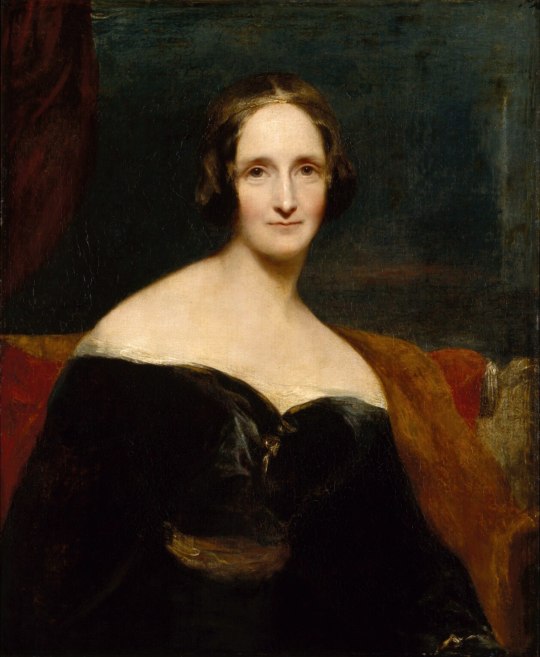
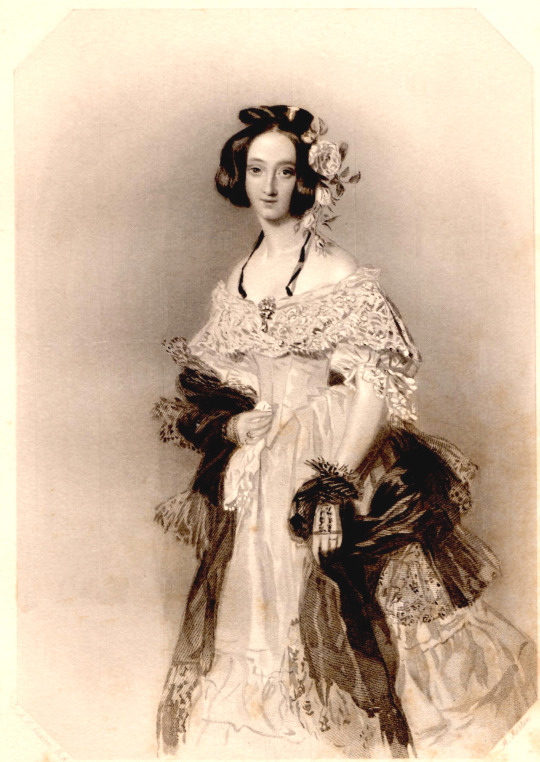
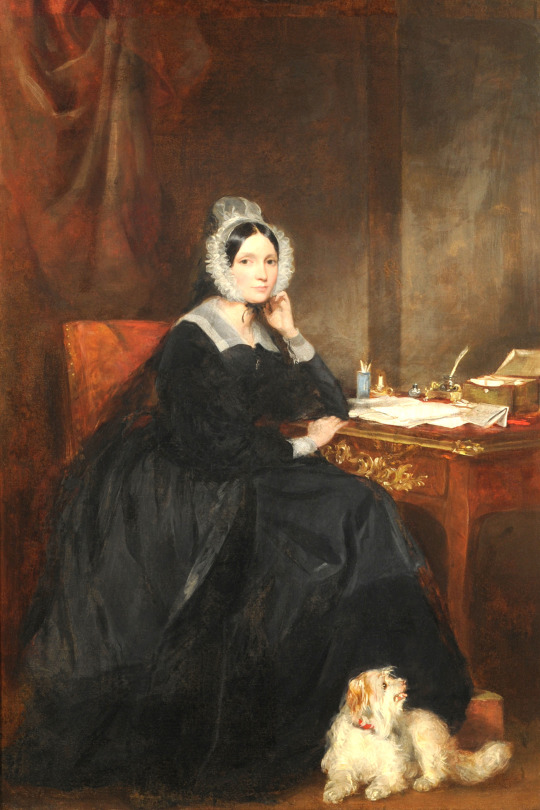
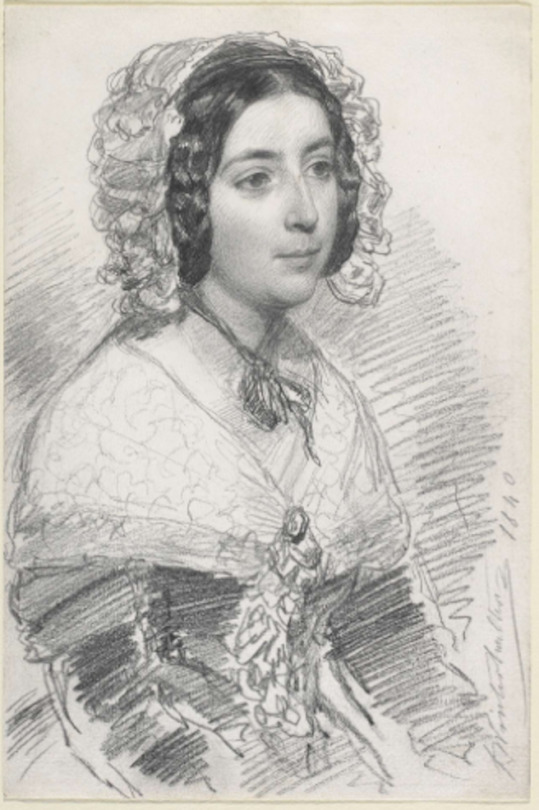
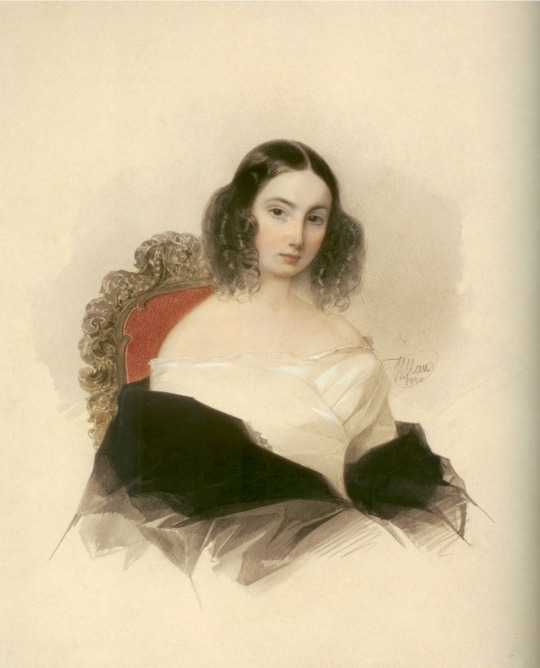


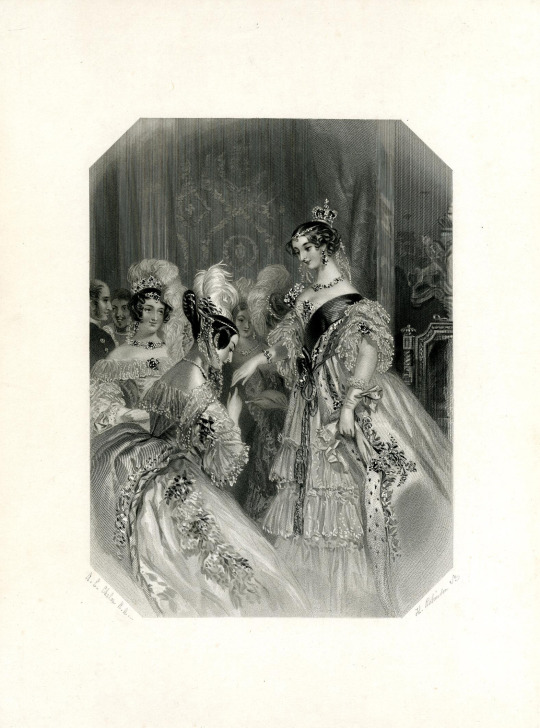
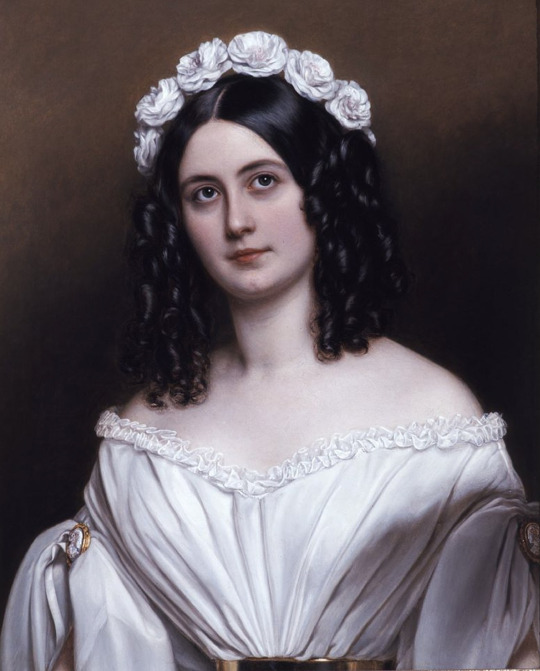
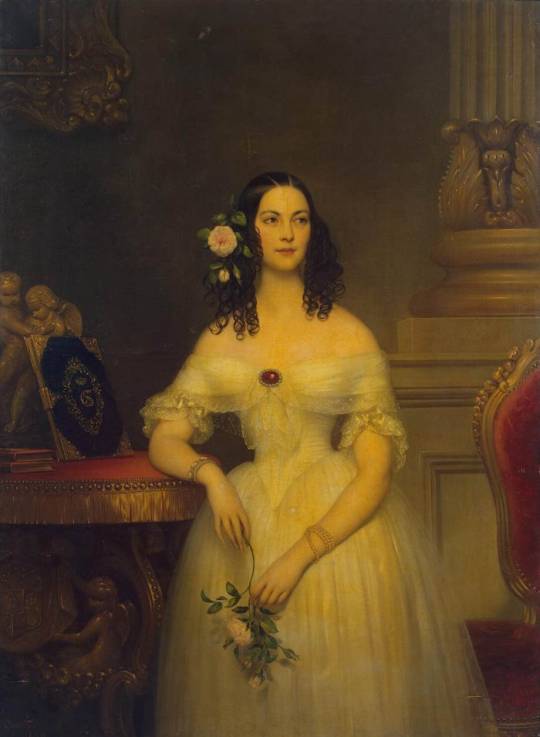
1840 fashion:
Top row left: 1840 (exhibited) Mary Wollstonecraft Shelley by Richard Rothwell (National Portrait Gallery - London, UK). From Wikimeda 1733X2109 @72 680kj. She wrote Frankenstein. Scientists at that time had found that frog legs could be moved by electricity.
Top row right: 1840 (published) Lady Hume Campbell by Frederick Christian Lewis Sr, after Alfred Edward Chalon From April's photostream on flickr 1455X2052 @300 964k.
Second row left: 1840 Charlotte, Lady Malcolm (1789-1867), née Isabella Charlotte Campbell, by Sir Francis Grant (auctioned by Tennants). Increased exposure 1304X1957 @72 892kj.
Second row right: 1840 Countess Marie Jaubert, née Boigues (1805-1864) by Franz Xaver Winterhalter (National Gallery of Canada - Ottawa, Canada) From gallery.ca/en/see/collections/artwork.php?mkey=65; doubled size 656X986 @72 965kp.
Third row left: 1840 Mariya Stolypin (1819-1895), née Trubetskaya, second marriage Vorontsov by Vladimir Hau (State Russian Museum - St. Petersburg Russia) 1306X1615 @200 467kj.
Third row right: 1840 Principessa Altieri by Franz Xaver Winterhalter (Landesmuseum - Mainz, Rheinland-Pfalz, Germany). From klimbim.minus.com/mA4LzLijvdvQ8 2069X2830 @72 2.2Mj.
Third row right: 1840 Queen Louise Marie of Belgium by Eugéne Verboeckhoven and Gustaaf Wappers (Royal Collection, Belgium) FDxMinnie 6Jan09 550X766 @78 ixels/cm 129kj.
Fourth row left: 1840 Rosalie Julie. Freiin von Bonar by Josef Karl Stieler (Schonheitengallerie Schloß Nymphenburg - Munchen Germany). From hmoob.in-wiki-1840s_in_Western_fashion#wiki-6 2656X3285 @150 1.3Mj.
Fourth row right: 1840 The Presentation by Henry Robinson after Alfred Edward Chalon (British Museum). From their Web site 1574X2122 @300 1.5Mj.
Fifth row left: 1840 Rosalie Julie, Freiin von Bonar by Josef Karl Stieler (Schonheitengallerie Schloß Nymphenburg, Munchen Germany). From hmoob.in-wiki-1840s_in_Western_fashion#wiki-6; removed spots w Pshop 2654X3299 @150 1.3Mj
Fifth row right: 1840 Yekaterina Scherbatova by Joseph-Désiré Court (Hermitage). From french-painters.blogspot 820X1255 @150 169kj.
#early Victorian fashion#1840 fashion#Biedermeier fashion#Romantic era fashion#side curl coiffure#V neckline#V waistline#hair flowers
11 notes
·
View notes
Text
20th – 25th October: The long evenings Emma had fearfully anticipated
Read and Comment on Wordpress
Read: Vol. 1, ch. 3; pp. 11–13 ("Mr. Woodhouse was fond of society" through to "long evenings she had fearfully anticipated").
Context
Emma attempts to entertain herself and her father with visitors. During this time as in the forgoing weeks, Emma is presumably left alone while Mr. Woodhouse takes his naps “as usual” between dinner (likely served sometime in the afternoon) and tea (served sometime in the evening) (Austen vol. 1, ch.1; p. 1). The “evening” in particular as a time of day that must be struggled through is brought up repeatedly in this and preceding chapters.
Readings and Interpretations
The Ranks of the Chosen
In this passage, we learn more about the stratification of Highbury society. A modern understanding of socioeconomic “class” that groups people together into various strata, and thus unites as much as it divides them, is less to the point here than a Georgian concept of “rank” or “degree,” in which each individual occupies their own rung on the ladder (see Hume, p. 58). Graham Martin notes another conceptual difference between the analyses implied by the two terms: “[w]here ‘class’ points to an economic structure of competing interests, ‘rank’ points to a social structure, a hierarchical order which, in ideological terms, is consensual” (p. 133). That is, a Burkean conservatism would hold that stratification in terms of rank is not only natural, but also to the benefit of all involved.
This passage divides Highbury, including characters we have already met and some whom we will see ‘on stage’ only later, into “the chosen and the best” and “a second set.” Among this “second set” is Mrs. Bates, who is described as being “considered with all the regard and respect which a harmless old lady, under such untoward circumstances, can excite.” This somewhat sardonic statement is notable to me in that it could mean just anything—however, the idea that Mrs. Bates’s “untoward circumstances” moderate rather than increase her neighbours’ respect is then immediately enforced with the subsequent lines about her daughter, Miss Bates: she “enjoyed a most uncommon degree of popularity for a woman neither young, handsome, rich, nor married” (Austen vol. 1, ch. 3; p. 11).
It is often pointed out that this last string of adjectives more or less reverses the famous “handsome, clever, and rich” that begins the novel. Thus Mary Hong:
The contrast between her possessing no features which would make Hetty Bates a character worthy of the reader's attention [such as intellectual superiority, beauty, or cleverness] and her inclusive tendencies [such as universal good-will] seems to cast her as the exact opposite of the "handsome, clever, and rich" heroine […] Miss Bates plays a secondary or supporting role to the centrality of Emma, as suggested through the similar syntax but oppositional language that introduces both (p. 240).
Louise Flavin follows a similar observation with the point that “[w]hile Miss Bates is unlike Emma Woodhouse in most obvious ways, a comparison is suggested by the fact that she, like Emma, cares for an aging parent and has a happy and contented disposition. This comparison prepares us for Emma’s growing obsession with Miss Bates and ‘her set,’ a rivalry that occupies Emma’s mind” in future installments (n.p.).1
Also in regards to Miss Bates, commenters who view Emma as being in part an indictment of the vulnerability of fortuneless women in Georgian society often read the description of her as standing “in the very worst predicament in the world for having much of the public favour,” having “no intellectual superiority to make atonement to herself, or frighten those who might hate her into outward respect” as containing a particular asperity, or an ominous tone (see for example Harding, p. 350; Smith, p. 137).
The Most Come-at-Able
Some scholars attribute the hierarchisation of potential visitors in this section to Emma (meaning that the description of Miss Bates and company as “come-at-able” must be a demonstration of free indirect style). See for example John Mullan:
Austen, with a refusal of moralism worthy of Flaubert, abandons her protagonist to her snobbery and confidently risks inciting foolish readers to think that the author must be a snob too. Emma’s snobbery pervades the novel, from that moment when we hear Mrs Goddard, the mistress of the little girls’ boarding school, and Mrs and Miss Bates described as “the most come-at-able” denizens of Highbury (meaning that they are at the beck and call of Emma and her hypochondriac father) (n.p.).
Linda Bree, in contrast, considers the phrase “come-at-able” to be a “colloquialism[]” “in the narrative commentary,” rather than a phrase pulled from Emma’s perspective—such colloquialisms on the part of the narrator and the characters all “contribute[] to the sense of ‘ordinary life’ in Highbury” (p. 98). Either way, the phrase is certainly a snappy and evocative one.
A Good Old-Fashioned Boarding-School
Some scholars attribute the sentiments in the passage describing the difference between “a real, honest, old-fashioned Boarding-school” and a “seminary” peddling expensive “nonsense” to Austen herself. In this reading, the outburst on women’s education indicates a rare looseness or break in the general tightness of the novelistic texture of Emma, which usually includes only what is necessary. For example, per Robert Merrett:
The novelist’s respect for traditional eighteenth-century ethical thought and ideas about the mind is very evident in her conduct of Emma. For example, she does not hesitate to drop her usually indirect narrative voice to satirize progressive education which would treat human nature too systematically […] This defence of traditional values on Jane Austen’s part clearly shows how much she enjoys promoting pragmatic, prudent, and rational expectations about human nature (p. 53).
In contrast, Massimiliano Morini argues that the passage represents “the narrator-as-a-character (a figure conflated by many with Austen herself) com[ing] out of impersonal hiding”: “the narrator comes out not by saying ‘I,’ but by expressing in a very direct manner his/her personal opinions on contemporary affairs (in this case, the confusion with the historical Jane Austen is almost inevitable)” (p. 422).
T.A.B. Corley gives some insight into the status of the boarding-school as a “commercial enterprise,” and to Mrs. Goddard’s placement in Highbury’s hierarchy:
Some scholars have had difficulty in deciding on Mrs Goddard’s precise social status in Highbury. She certainly belongs to the second set, and is willing to sit with Mr Woodhouse in the evenings when summoned, while her respectful request to Emma over Harriet Smith indicates a deference towards her social superiors. She is unlikely ever to have been entertained as an equal by Mr Knightley (p. 125).
Nevertheless, “[h]er gross income could have been well over £700 a year, with some being put away for her old age. She is neither depressed nor impoverished. Economically, therefore, Mrs Goddard is a not unimportant personage in Highbury.” Corley attributes the fact that she nevertheless considers herself at the disposal of a summons from the Woodhouses (rather than dining with another family in Highbury on terms of equality or near-equality) in part to the circumstance that “at Hartfield there is the advantage of an early hour of dismissal and a coach ride home” (pp. 125-6).
Footnotes
1. Maaja Stewart likewise compares Emma and Miss Bates on the strength of this passage (pp. 77-8). See also Elizabeth Sabiston, who reads Emma and Miss Bates’s shared care of an ageing parent as a marker of the “feminine plight of dependence and subordination” that recurs throughout the novel: “Emma is no freer, in fact, than the spinsters and widows living in genteel poverty” (p. 24).
Discussion Questions
1. What might cause the emphasis on “evening” (as opposed to morning, or afternoon) as a time of day that is particularly boring, lonely, or necessary to fill?
2. Is the description of “the chosen and the best” versus the “second,” “come-at-able” set focalised through Emma, is it narratorial commentary, or does it shade back and forth between the two? Is it possible for it to be both simultaneously? How does the answer to this question change how we read the book (and its attitude to things such as intelligence, beauty, and rank)?
3. Is the “seminary” passage a transparent outburst of Austen’s own opinions on women’s education, or can we attribute the point of view here to someone or something else? What is the purpose of this passage?
Bibliography
Bree, Linda. “Style, Structure, Language.” In Sabor (2015), pp. 88-104.
Corley, T. A. B. “Jane Austen’s ‘Real, Honest, Old-Fashioned Boarding-School’: Mrs La Tournelle and Mrs Goddard.” Women’s Writing 5.1 (1998), pp. 113-30. DOI: 10.1080/09699089800200035.
Flavin, Louise. “Free Indirect Discourse and the Clever Heroine of Emma.” Persuasions 13 (1991), pp. 50-7.
Harding, D. W. “Regulated Hatred: An Aspect of the Work of Jane Austen.” Scrutiny 8 (March 1940), pp. 346–62.
Hong, Mary. "‘A Great Talker upon Little Matters’: Trivializing the Everyday in Emma.” Novel: A Forum on Fiction 38.2/3 (Spring - Summer 2005), pp. 235–53. DOI: 10.1215/ddnov.038020235.
Hume, Robert D. “Money and Rank.” In Sabor (2015), pp. 52-67.
Martin, Graham. “Austen and Class.” Women's Writing 5.1 (1998), pp. 131–44. DOI: 10.1080/09699089800200028.
Merrett, Robert James. “The Concept of Mind in Emma.” English Studies in Canada 6.1 (Spring 1980), pp. 39–55. DOI: 10.1353/esc.1980.0046.
Morini, Massimiliano. “Who Evaluates Whom and What in Jane Austen’s Novels?” Style 41.4 Rhetoric and Cognition (Winter 2007), pp. 409–33.
Mullan, John. “How Jane Austen’s Emma Changed the Course of Fiction.” The Guardian. 5 December 2015.
Sabiston, Elizabeth Jean. The Prison of Womanhood: Four Provincial Heroines in Nineteenth-Century Fiction. New York: Palgrave Macmillan, 1987.
Sabor, Peter, ed. The Cambridge Companion to ‘Emma' (Cambridge Companions to Literature). Cambridge: Cambridge University Press, 2015.
Smith, LeRoy W. Jane Austen and the Drama of Woman. London: Macmillan (1983).
Stewart, Maaja. “The Fools in Austen’s Emma.” Nineteenth-Century Literature 41.1 (June 1986), pp. 72–86.
53 notes
·
View notes
Note
Could you do old Hollywood casting for mean girls or clueless ?
Mean Girls
Cady: Donna Reed or Constance Bennett
Regina: Joan Crawford (the ONLY choice)
Karen: Jayne Mansfield or Marilyn Monroe
Gretchen: Loretta Young
Janis: Jennifer Jones or Geraldine Fitzgerald
Aaron Samuels: Guy Madison or William Henry
Clueless
Cher: Jane Greer or young Eve Marie Saint
Tai: Jean Arthur
Josh: young Gary Cooper
Dionne: Louise Brooke (left field but just really think about it)
Murray: young John Barrymore or Robert Taylor
Travis: Hume Cronyn
Elton: Charles Boyer
Amber: young Patricia Neal or Shelly Winters
Christian: young Randolph Scott
3 notes
·
View notes
Photo




John Boyd Dunlop, who patented the first practical pneumatic tyre, was born in Ayrshire on February 5th 1846.
The pneumatic tyre was invented and indeed patented more than 40 years earlier by another Scot, Robert William Thomson, who I have posted about before, unfortunately Thomson was way ahead of his time, the car was still to be invented and Bicycles were not yet popular. Thomson’s patents for pneumatic tyres were taken out in 1846 and 1847 in France and the USA respectively. They describe a hollow rubber tube surrounded by leather and inflated by air. They were further held back by the fact that rubber production was still in its infancy and he just couldn’t get his invention to work properly at a cost-effective price. Forty years on, and John Boyd Dunlop did manage to re-invent the pneumatic tyre with a design which he went on to develop commercially, making his name world-famous.
There are, of course, many Americans who think that Charles Goodyear invented tyres – he didn’t, but he did invent and patent the process of vulcanisation which made solid rubber tyres and many other rubber products possible.
Dunlop was born into a farming family at Dreghorn in Ayrshire, he studied veterinary science at the Royal Dick Vet in Edinburgh and practiced in Scotland for 10 years before moving in 1867 to Downpatrick in County Down in Ireland. With his brother James he later set up a practice in Belfast which became one of the largest in Ireland. He married farmer’s daughter Margaret Stevenson in 1871 and they had a daughter and a son.
Dunlop had carried out several scientific experiments with rubber, especially rubber tubing for veterinary usages, but it was a problem with his nine-year-old son Johnny’s tricycle that led Dunlop to his great breakthrough.
In October, 1867, Dunlop came up with the idea of putting an inflated rubber tube around the wooden front wheel of his son’s trike that measured nearly a metre across.
He then rolled the new wheel alongside an old wheel and the rubberised wheel went much further. He added rubber tubes to the two smaller rear wheels of the trike and again the ride was easier and longer-lasting.
We know exactly what those early tyres looked like, because Dunlop gave one to the National Museum of Scotland (NMS) in 1910 and it has a place of honour in the museum in Edinburgh to this day., as seen i the first pic.
Realising he had hit on something special, Dunlop continued experimenting until he applied for a British patent in December, 1888, for what he called his “safety bicycle”. Some of the early versions were made in Scotland.
This patent was granted though the existence of Thomson’s earlier patents in France and the USA meant he could not claim to have invented the idea – his process, however, was recognised in its own right and there soon came proof that Dunlop’s tyres were revolutionary, as the champion Irish cyclist Willie Hume began using them in 1889 and he won almost every race he entered. The days of solid bicycle tyres were numbered.
Dunlop sold his patent rights to businessman William Bowden, and he sold them on to the industrialist William Harvey du Cros who persuaded Dunlop to exploit his patents. The two men established The Pneumatic Tyre and Booth’s Cycle Agency Limited which first manufactured Dunlop’s patent tyres in Dublin in December, 1889.
In 1892 the company expanded to England as the Dunlop Pneumatic Tyre Company before the building of Fort Dunlop in 1900 in Birmingham as the Dunlop Rubber Company Limited.
Dunlop retired from the business in 1895, though he kept his shares making him comfortably off as du Cros sold the business for a sum reputed to be £3 million in 1896. Dunlop’s tires were adapted for the motor cars that came on to the scene, but the Scot did not really benefit as the company that bore his name was now in the hands of other entrepreneurs who expanded it into a great many fields, including the production of golf balls.
Always fastidious about his health, Dunlop supposedly did not suffer from any great illness during his life until his last days when he contracted a chill and died at his home at Dublin's Ball's Bridge in 1921 and is buried in Deans Grange Cemetery, he was 81.
NMS pays tribute to both Thomson and Dunlop on its website, stating: “John Boyd Dunlop invented the pneumatic tyre in 1888, unaware that Robert Thomson had already patented a design for a pneumatic tyre in 1846. “Dunlop went on to market his design, initially for bicycles but the company that bore his name were soon making tyres for the new motor cars that were emerging in the 1890s.”
Louise Innes, principal curator of transport at the museum, said: “These tyres are icons of the modern world, changing lives across the planet.”
They certainly did that, and it’s for his re-invention and commercial development of the pneumatic tyre that Dunlop is still revered to this day.
Pics are the tyre in the NMS, his son, John on his tricycle with the first two tyres in use, the man himself on a bicycle and a Northern Irish ten pound note which features Dunlop.
24 notes
·
View notes